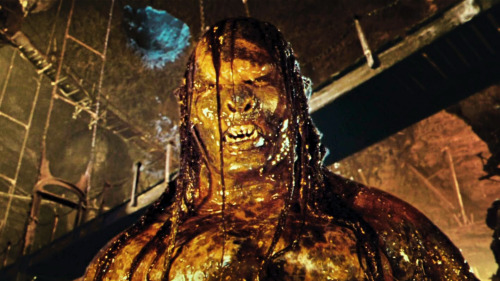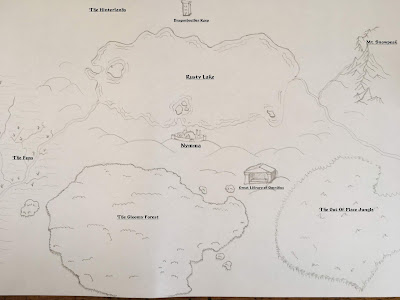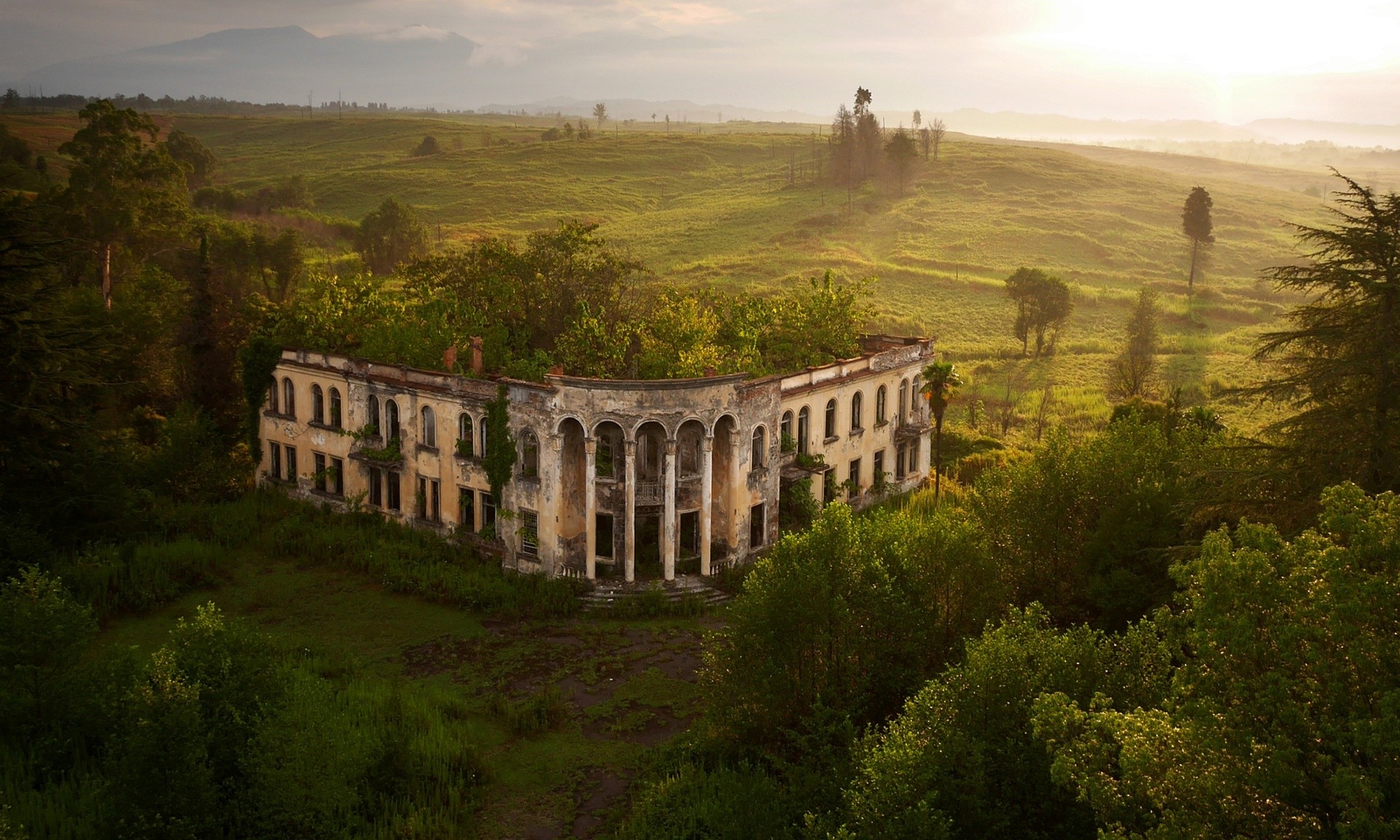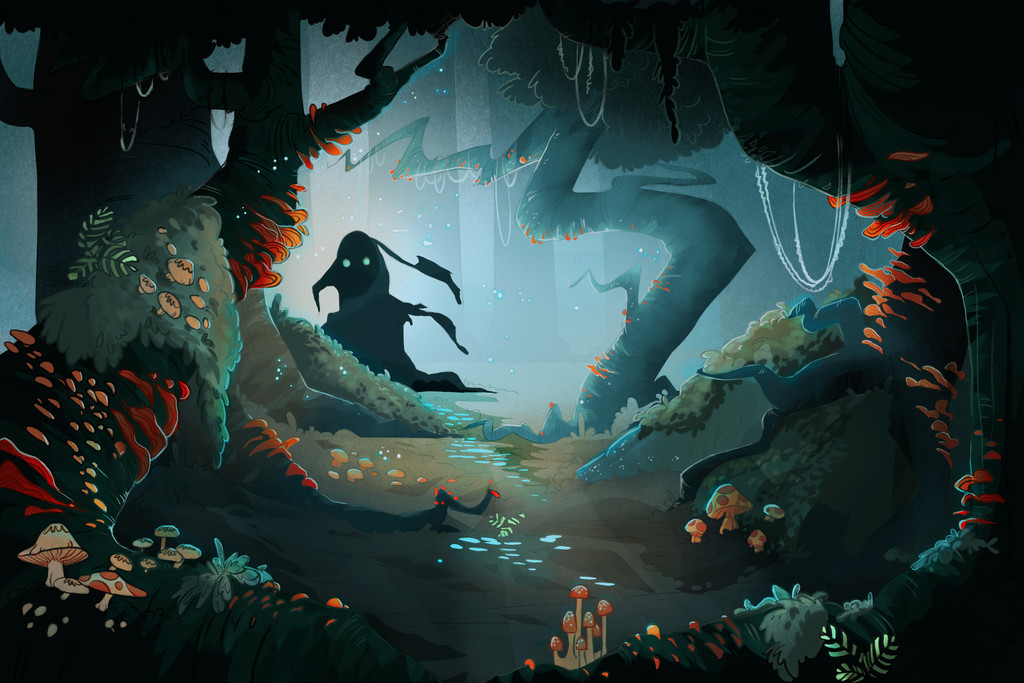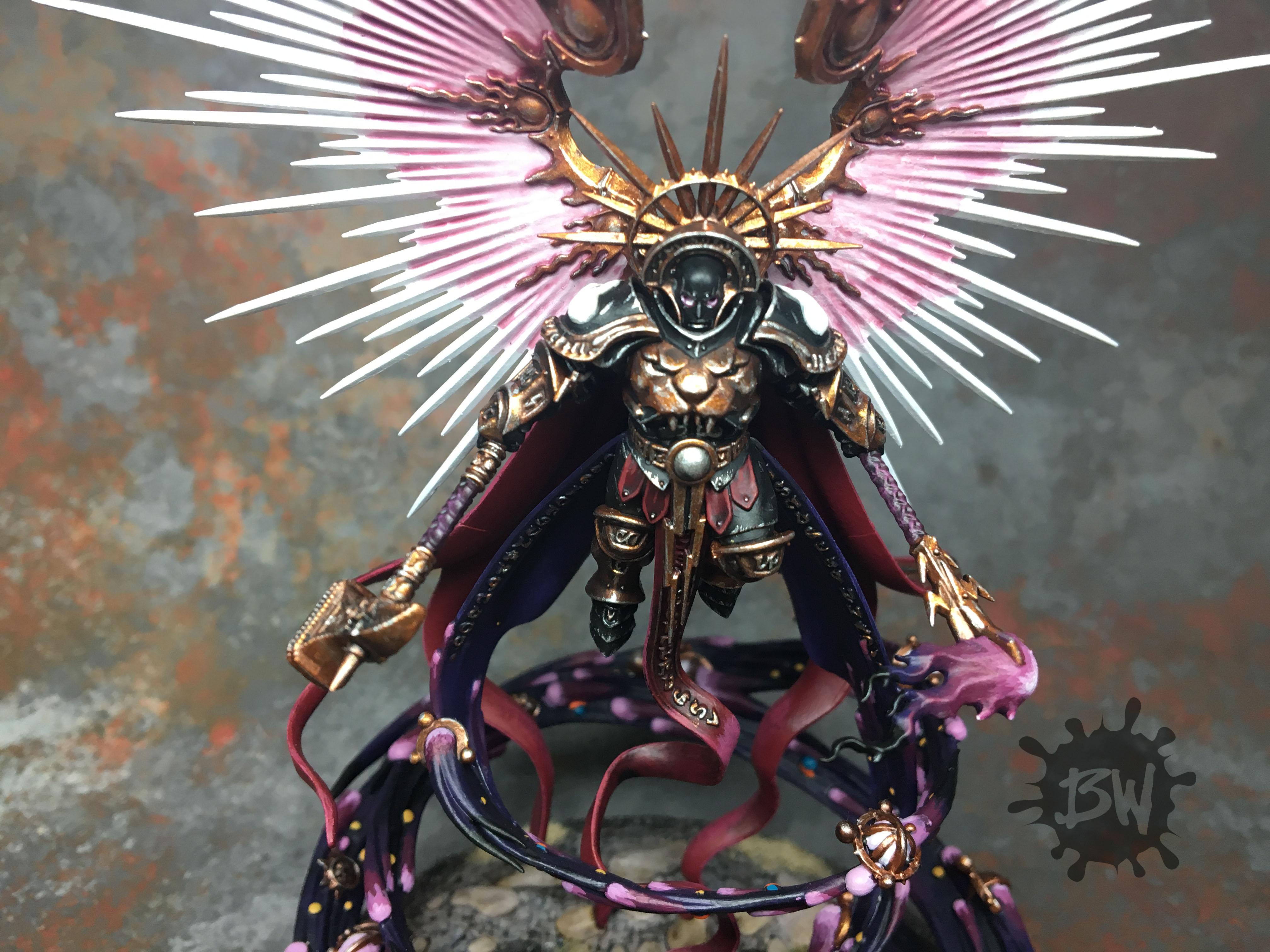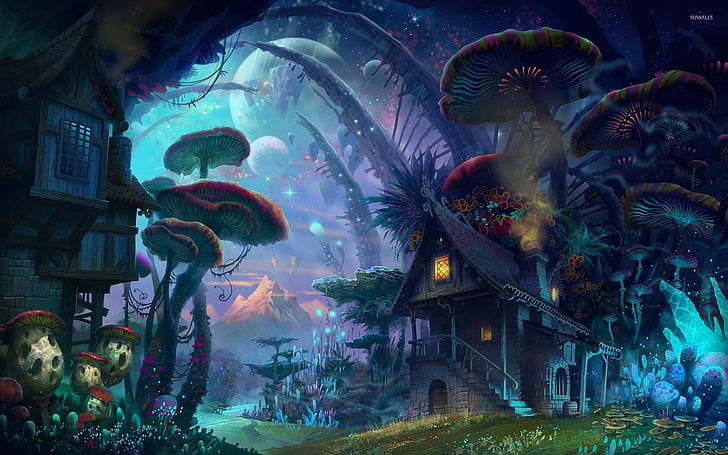The players in my
Sunset Realm campaign recently reached 10th level and have acquired some fame. They restored the flow of iron ore to the civilized lands and have gained the favor of nobles and kings.
Being a fan of strategic-level play and domain management, I crafted a homebrew set of domain game rules.
Note: Wyld and Temple ratings correspond directly to my Magic in the Sunset Realm rules, so consider that an optional rule.
Fiefs and Followers
Adventurers can opt to found a fief. A fief (domain, province) is a single 48-mile hexagon on the map, controlled by a character. Fiefs are ruled from a holding, either a keep, castle, tower or similar building. Fiefs can be either granted (by a king or lord), conquered, or cleared (in the case of an unclaimed wilderness hex). Fiefs can be held by more than one character, and many adventuring parties share a fief, each member establishing a holding within it.
Fiefs are statted as follows:
Level: an overall measure of population, development and prosperity. A fief’s level is the most important factor. A fief’s population can roughly be determined by squaring its level and multiplying it by 1,000. Most fiefs fall into the level 1-5 range. Only heavily developed areas exceed this range. There is no upper limit to the development of a fief.
Example: Antissa is a level 7 fief. It’s population can roughly be calculated as 7x7, multiplying by 1,000 for 42,000 citizens.
A fief’s level is important when factoring income, as outlined below.
Wyld: A fief’s Wyld rating is a rough measure of its raw arcane background power. The Wyld rating is determined by dominant terrain within a fief as follows:
Badlands/Desert – 3
Hills/Plains – 5
Light Forest – 7
Mountains – 7
Coast – 7
Heavy Forest – 8
High Mountains – 8
Marsh/Swamp – 8
For every level of development of a fief, the Wyld rating is lowered by 1 as the spread of civilization blocks the flow of arcane power through the land. The Wyld rating is directly translated into the maximum spell level that can be cast by bards, eldritch knights, arcane tricksters, sorcerers, warlocks and wizards within the fief.
Note: Elven settlements do not hamper the flow of arcane energy throughout the land. Their architecture allows the Wyld to flow unhindered.
Example: the harbor of Oronis lies near the coast. It is however a fief developed to level 3, lowering the Wyld rating of the area by the same amount. The Wyld rating of Oronis and surrounding area is therefore 4, allowing a maximum of level 4 spells to be cast by arcane spellcasters.
The domain of Arbor, within Arbor Forest, is a level 3 fief. But because it is a Wood Elven settlement, its development does not hamper the flow of arcane magic. Its Wyld rating thus remains 7.
Temple: A fief’s Temple rating is an abstraction of its religious devotion, measured in devoted souls, faithful congregations and religious buildings. A fief’s Temple rating can never be higher than its level. A fief’s Temple rating corresponds directly to the maximum level of spells that clerics, druids, paladins and rangers can cast.
Example: Antissa is home to the Celestial Mountain, a center for religious worship throughout the Alliance. It has invested heavily in religious institutions and boasts a devout population. Antissa’s Temple rating is 7, maximally developed, and therefore allows the casting of level 7 divine spells.
Contentment: An abstract measure of the population’s general attitude towards its rulers, contentment has three stages:
Friendly: the population is generally supportive of its government.
Indifferent: there are complaints, but at least the government is trusted to provide protection and vital services.
Hostile: there is widespread unrest, the population is one step short of open rebellion.
If contentment drops below Hostile, the fief is considered in open rebellion and provides no income or troops for its holder.
A fief’s contentment level can be influenced by the actions of its ruler(s). Charismatic rulers often have an easier time than uncharismatic ones to retain their population’s favor. Contentment can be increased by a month’s long campaign, requiring large amounts of money, public works or the staging of spectacles. Alternatively, the fief’s holder can quell the unrest by the deployment of troops. The ruler makes a Charisma check at the end of the month (modified for a particular skill, with a DC set by the DM based on the contribution made by the ruler). If the check is successful, contentment rises by one step.
Example: Aurora generally has an Indifferent attitude to its rulers, being a metropolis recently resettled with a frontier mentality. Recent events have spread unrest among the population, and its contentment has become Hostile. Aurora’s ruler, the Warforged known as the Primary, seeks to quell the unrest and institutes a strict regime of zero tolerance. After a month of cracking down on unrest, the Primary makes a Charisma (Intimidation) check to try and raise Aurora’s contentment back to Indifferent.
Fief income
All fiefs not in rebellion against their rulers provide income to their holders. At the end of a month, a fief’s holder can choose to levy tax on his fief. He can choose either light, moderate or heavy taxation. The severity of a levy determines the size of the dice to be rolled, the fief’s level determines the amount of dice rolled, 1 per level.
Light
d4
Moderate
d6
Heavy
d12
The total rolled, multiplied by 100, is the amount of gold collected that month.
Levying moderate taxes reduces the fief’s Contentment one level. Levying heavy taxes reduces Contentment two stages. Choosing to forego taxation raises the fief’s Contentment level by one stage.
Example: Antissa, a level 7 fief, needs to pay for wartime expenses against marauding elves. King Kenneth levies a moderate tax, rolling 7d6 to determine income. He rolls a total of 27, thereby collecting 2,700 gp for the treasury but incurring the ire of the population. Antissa’s normally Friendly population becomes Indifferent.
Followers
Any adventurer with a holding in a fief that has reached 9th level in a single class attracts followers, as per the following table:
Barbarian
1d4+1 x10 tribal warriors
Bard
1 special (determined by DM), 1d6 scouts
Cleric
2d6 acolytes, 1d4+1 x10 guards
Druid
1 druid, 2d6 scouts
Fighter
2d6 veterans, 2d4+2 x10 guards
Monk
2d6 martial arts adeptsVGTM
Mystic
2d4 special (determined by DM)
Paladin
1 special (determined by DM), 2d4 knights
Ranger
1d4+1 x10 scouts
Rogue
2d6 spies
Sorcerer
2d6 apprentice wizardsVGTM
Warlock
1d3 special (determined by DM)
Wizard
2d6 apprentice wizardsVGTM
Followers require upkeep consisting of 2 gold pieces per day, in addition to lifestyle costs.
